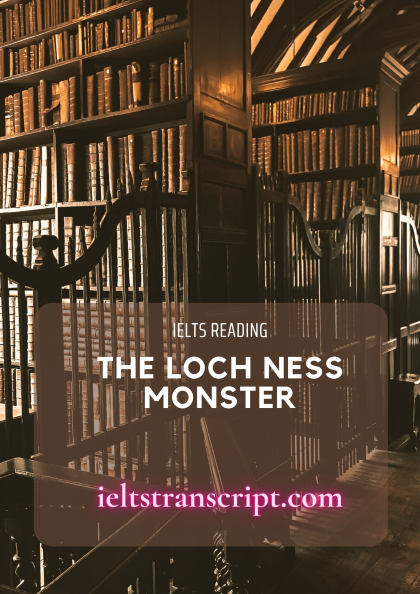- Đối với sản phẩm có giá: Sau khi chúng tôi ghi nhận thông tin đã thanh toán sản phẩm của bạn, sản phẩm sẽ được mở khóa và bạn có thể xem trực tiếp và tải tài liệu sản phẩm.
- Đối với thành viên trả phí: Bạn có thể mua và thanh toán sản phẩm với giá 0đ để tải tài liệu sản phẩm.
- Bạn có thể liên hệ với chúng tôi để được hỗ trợ mở khóa sản phẩm sớm nhất.
The Great Australian Fence
- Chúng tôi chấp nhận các phương thức thanh toán sau đây: Thẻ tín dụng, thẻ ghi nợ, PayPal, chuyển khoản ngân hàng và tiền mặt.
Chúng tôi sẽ không thu thêm phí cho bất kỳ hình thức thanh toán nào.
- Nếu bạn gặp vấn đề về sản phẩm của chúng tôi trong thời gian sử dụng, vui lòng liên hệ với chúng tôi để được hỗ trợ xử lý sớm nhất nhé.
Xem trước mẫu
The Great Australian Fence
A war has been going on for almost a hundred years between the sheep farmers of Australia and the dingo, Australia’s wild dog. To protect their livelihood, the farmers built a wire fence, 3,307 miles of continuous wire mesh, reaching from the coast of South Australia all the way to the cotton fields of eastern Queensland, just short of the Pacific Ocean.
The Fence is Australia’s version of the Great Wall of China, but even longer, erected to keep out hostile invaders, in this case hordes of yellow dogs. The empire it preserves is that of the woolgrowers, sovereigns of the world’s second largest sheep flock, after China’s – some 123 million head – and keepers of a wool export business worth four billion dollars. Never mind that more and more people – conservationists, politicians, taxpayers and animal lovers – say that such a barrier would never be allowed today on ecological grounds. With sections of it almost a hundred years old, the dog fence has become, as conservationist Lindsay Fairweather ruefully admits, ‘an icon of Australian frontier ingenuity’.
To appreciate this unusual outback monument and to meet the people whose livelihoods depend on it, I spent part of an Australian autumn travelling the wire. It’s known by different names in different states: the Dog Fence in South Australia, the Border Fence in New South Wales and the Barrier Fence in Queensland. I would call it simply the Fence.
For most of its prodigious length, this epic fence winds like a river across a landscape that, unless a big rain has fallen, scarcely has rivers. The eccentric route, prescribed mostly by property lines, provides a sampler of outback topography: the Fence goes over sand dunes, past salt lakes, up and down rock-strewn hills, through dense scrub and across barren plains.
The Fence stays away from towns. Where it passes near a town, it has actually become a tourist attraction visited on bus tours. It marks the traditional dividing line between cattle and sheep. Inside, where the dingoes are legally classified as vermin, they are shot, poisoned and trapped. Sheep and dingoes do not mix and the Fence sends that message mile after mile.
What is this creature that by itself threatens an entire industry, inflicting several millions of dollars of damage a year despite the presence of the world’s most obsessive fence? Cousin to the coyote and the jackal, descended from the Asian wolf, Cam’s lupus dingo is an introduced species of wild dog. Skeletal remains indicate that the dingo was introduced to Australia more than 3,500 years ago probably with Asian seafarers who landed on the north coast. The adaptable dingo spread rapidly and in a short time became the top predator, killing off all its marsupial competitors. The dingo looks like a small wolf with a long nose, short pointed ears and a bushy tail. Dingoes rarely bark; they yelp and howl. Standing about 22 inches at the shoulder – slightly taller than a coyote – the dingo is Australia’s largest land carnivore.
The woolgrowers’ war against dingoes, which is similar to the sheep ranchers’ rage against coyotes in the US, started not long after the first European settlers disembarked in 1788, bringing with them a cargo of sheep. Dingoes officially became outlaws in 1830 when governments placed a bounty on their heads. Today bounties for problem dogs killing sheep inside the Fence can reach $500. As pioneers penetrated the interior with their flocks of sheep, fences replaced shepherds until, by the end of the 19th century, thousands of miles of barrier fencing crisscrossed the vast grazing lands.
The dingo started out as a quiet observer,’ writes Roland Breckwoldt, in A Very Elegant Animal: The Dingo, ‘but soon came to represent everything that was dark and dangerous on the continent.’ It is estimated that since sheep arrived in Australia, dingo numbers have increased a hundredfold. Though dingoes have been eradicated from parts of Australia, an educated guess puts the
...Hàng rào vĩ đại ở Úc
Một cuộc chiến đã diễn ra trong gần một trăm năm giữa những người chăn nuôi cừu ở Úc và chó Dingo, một loài chó hoang ở Úc. Để bảo vệ sinh kế nhai của họ, những người nông dân đã xây dựng một hàng rào thép, dài 3.307 dặm bằng lưới thép liên tiếp, kéo dài từ bờ biển Nam Úc đến tận những cánh đồng bông ở phía đông Queensland, chỉ cách Thái Bình Dương.
Hàng rào là phiên bản của Vạn Lý Trường Thành ở Trung Quốc, nhưng thậm chí còn dài hơn, được dựng lên để ngăn chặn những kẻ xâm lược thù địch, trong trường hợp này là những kẻ xảo trá. Lãnh thổ mà nó bảo tồn là của những người chăn cừu, cai quản đàn cừu lớn thứ hai thế giới, sau Trung Quốc – khoảng 123 triệu con – và là những người quản lý một doanh nghiệp xuất khẩu len trị giá 4 tỷ đô la. Đừng bận tâm rằng ngày càng có nhiều người – các nhà bảo tồn, chính trị gia, người đóng thuế và những người yêu động vật – nói rằng một hàng rào như vậy thì sẽ không bao giờ được cho phép dựng lên trên các khu đất sinh thái ngày nay. Với những khu vực gần một trăm năm tuổi, hàng rào ngăn chó đã được triển khai, như nhà bảo tồn Lindsay Fairweather thừa nhận một cách thẳng thắn, rằng ‘một biểu tượng của sự khéo léo ở biên giới Úc’.
Để đánh giá công trình ở những vùng xa xôi hẻo lánh này và để gặp gỡ những người kiếm sống phụ thuộc vào nó, tôi đã dành một phần thời gian vào mùa thu ở Úc để đi thăm quan hàng rào. Nó được biết đến với nhiều tên gọi khác nhau ở các bang khác nhau như: Hàng rào chắn Chó ở Nam Úc, Hàng rào Biên giới ở New South Wales và Hàng rào Rào cản ở Queensland. Tôi sẽ gọi nó một cách đơn giản là Hàng rào.
Đối với phần lớn chiều dài phi thường của nó, hàng rào hùng vĩ này uốn lượn như một dòng sông băng qua một cảnh quan, mà hiếm khi có một trận mưa lớn nào đổ xuống, và hầu như không có những con sông. Tuyến đường lệch tâm, được quy định bởi hầu hết các đường ranh giới đất đai, nó cung cấp một bản mẫu của địa hình hẻo lánh: Hàng rào đi qua các cồn cát, hồ muối trước đây, lên và xuống những ngọn đồi rải đá, xuyên qua bụi rậm và qua những vùng đồng bằng cằn cỗi.
Hàng rào nằm xa các thị trấn. Nơi mà nó đi qua gần một thị trấn, và đã thực sự trở thành một điểm thu hút khách du lịch ghé thăm trong các chuyến tham quan bằng xe buýt. Nó đánh dấu ranh giới phân chia lãnh thổ giữa gia súc và cừu. Phía bên trong, nơi những con chó Dingo đã được phân loại hợp pháp như sâu bọ, chúng bị bắn, nhiễm độc và bị bẫy. Cừu và chó Dingo không được lẫn lộn với nhau và Hàng rào gửi thông điệp đó đi hàng dặm.
Sinh vật này là gì mà tự nó đe dọa cả một ngành công nghiệp, gây thiệt hại hàng triệu đô la mỗi năm bất chấp sự hiện diện của hàng rào ám ảnh nhất thế giới? Anh em họ với chó sói rừng và chó rừng, là hậu duệ của loài sói châu Á, chó Cam’s lupus Dingo là một loài chó hoang du nhập. Những bộ xương còn sót lại cho thấy rằng chó Dingo đã được du nhập vào Úc cách đây hơn 3.500 năm, có thể là với những người đi biển châu Á đã đổ bộ lên bờ biển phía bắc. Loài chó Dingo có khả năng thích nghi rộng rãi một cách nhanh chóng và trong một thời gian ngắn đã trở thành kẻ săn mồi hàng đầu, giết chết tất cả các đối thủ cạnh tranh thú có túi. Chó Dingo trông giống như một con sói nhỏ với chiếc mũi dài, đôi tai ngắn nhọn và chiếc đuôi rậm rạp. Những con chó Dingo hiếm khi sủa; chúng thường kêu và hú lên. Tư thế đứng + vai cao khoảng 22 inch – cao hơn một chút so với chó sói – chó Dingo là loài ăn thịt lớn nhất ở Úc.
Cuộc chiến của những người nuôi cừu chống lại chó Dingoes, tương tự như cơn thịnh nộ của các chủ trang trại cừu chống lại chó sói đồng cỏ ở Mỹ, bắt đầu không lâu sau khi những người định cư châu Âu đầu tiên lên đường vào năm 1788, mang theo một hàng hóa của cừu. Những con chó Dingo chính thức trở thành kẻ sống ngoài vòng pháp luật vào năm 1830 khi các chính phủ đưa một khoản tiền cho những người đứng đầu họ. Ngày nay, số tiền thưởng cho những con chó gian xảo giết chết cừu bên trong Hàng rào có thể lên tới 500 đô la. Khi những người tiên phong thâm nhập vào bên trong đàn cừu của họ,
...Để xem được đầy đủ nội dung và tải dữ liệu, bạn phải trở thành thành viên của chúng tôi và trả phí cho tài liệu (nếu có)












